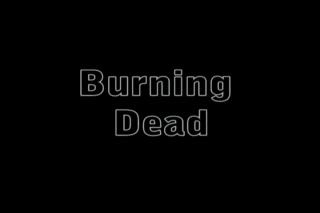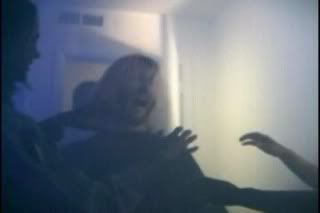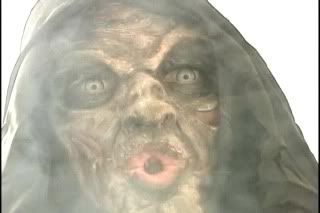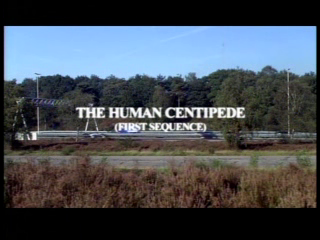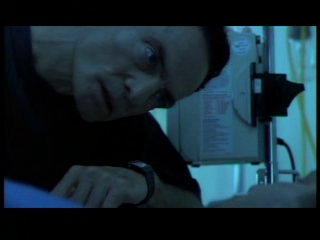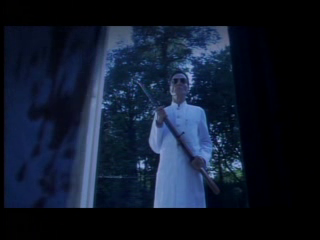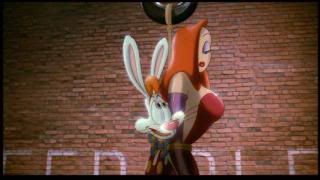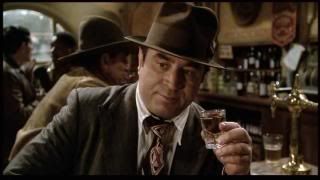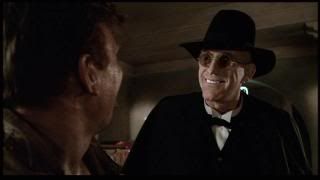Contemporary German Cinema has been getting a little shine here lately with reviews of DOWNFALL, GOODBYE LENIN!, and DER BAADER-MEINHOFF COMPLEX. All three of which are exceptional examples of how contemporary German cinema has been just knocking it out of the park over the last few years. As someone with a keen interest in German cinema, I thought I'd draw up a quick short-list of recommended films for anyone interested in following-up on the reviews posted here. Anyone who hasn't seen the above mentioned films should do so as well.
Fans of Tom Tykwer's RUN LOLA RUN would be well-advised to check out his other German language films:
WINTERSLEEPERS, 1997:
THE PRINCESS & THE WARRIOR, 2000:
Another great director whose films have really impressed me is Fatih Akin:
HEAD-ON, 2004:
THE EDGE OF HEAVEN, 2007:
Other great films include:
DER TUNNEL, 2001:
DER EDUKATORS, 2004:
DAS EXPERIMENT, 2001:
All of these films are worth your time and effort -- they are smart, sharp, and bracingly effective. At some point I hope to review them all.
Thursday, May 27, 2010
The Octagon (1980)

Like my blog colleague, Doug, I don't particularly consider myself to be a huge fan of Chuck Norris as a public persona, but I love his movies. I also think that people really do underestimate the impact of his movies.
Missing In Action nearly single handedly launched the "get 'em back" era of American action films during the Cold War, where the US always managed to top our traditional Communist enemies. Mission In Action was particularly significant as it helped to numb the eternal sting to US pride over embarrassments of the Vietnam War.
Chuck went back to 'Nam, Chuck won, and before you knew it so did Sylvester Stallone's John Rambo as the anticipated sequel First Blood diverged dramatically from the premise of the first film and seemingly tried to replicate what Mission In Action had already accomplished, albeit on a much larger budget.
The rest was history and the message was clear: "If you want your action movie to turn a profit, have the hero kill as many Communists as possible."
Like Missing In Action, The Octagon also tried to set the trend as it attempted to be one of the first films to introduce the ninja to a modern Hollywood.
Unfortunately for Chuck, the Cannon Group would fare much better in bringing shuriken-throwing assassins to mainstream audiences in the states than American Cinema Productions.
It's not surprising that after bouncing around film compainies for a couple of years, Norris eventually ended up as one of Cannon Group's biggest draws in the aforementioned, Missing In Action.
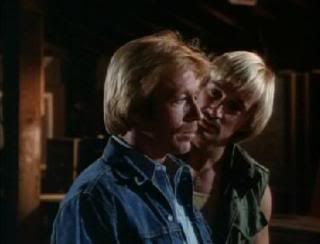
Missing In Action nearly single handedly launched the "get 'em back" era of American action films during the Cold War, where the US always managed to top our traditional Communist enemies. Mission In Action was particularly significant as it helped to numb the eternal sting to US pride over embarrassments of the Vietnam War.
Chuck went back to 'Nam, Chuck won, and before you knew it so did Sylvester Stallone's John Rambo as the anticipated sequel First Blood diverged dramatically from the premise of the first film and seemingly tried to replicate what Mission In Action had already accomplished, albeit on a much larger budget.
The rest was history and the message was clear: "If you want your action movie to turn a profit, have the hero kill as many Communists as possible."
Like Missing In Action, The Octagon also tried to set the trend as it attempted to be one of the first films to introduce the ninja to a modern Hollywood.
Unfortunately for Chuck, the Cannon Group would fare much better in bringing shuriken-throwing assassins to mainstream audiences in the states than American Cinema Productions.
It's not surprising that after bouncing around film compainies for a couple of years, Norris eventually ended up as one of Cannon Group's biggest draws in the aforementioned, Missing In Action.

1981's Enter The Ninja is arguably the wellspring for the Ninja boom in 1980's action cinema. A year prior, American Cinema Productions delved into ninja lore and tried to introduce their mystique and menace to action movie aficionados the world over.
The result was The Octagon; a movie that tried to be equal parts spaghetti western and ninja movie.
The story itself is both cluttered and implausible. Chuck Norris stars as Scott James, a retired martial artist with a checkered past. As a boy, James was raised by a master of ninjutsu named Isawa (played by John Fujioka who played just about everyone's shidoshi in ninja movies including American Ninja) and is raised alongside a resentful foster brother named Seikura (played as a youth by Brian Tochi and as an adult by Tadashi Yamashita).
Predictably, both James and Seikura grow apart and Seikura (in the most hilarious plot development ever) sets up a ninja training camp for would-be mercenaries somewhere in the jungles of Central America.
I'm not lying. I couldn't possibly make up something like that.

The result was The Octagon; a movie that tried to be equal parts spaghetti western and ninja movie.
The story itself is both cluttered and implausible. Chuck Norris stars as Scott James, a retired martial artist with a checkered past. As a boy, James was raised by a master of ninjutsu named Isawa (played by John Fujioka who played just about everyone's shidoshi in ninja movies including American Ninja) and is raised alongside a resentful foster brother named Seikura (played as a youth by Brian Tochi and as an adult by Tadashi Yamashita).
Predictably, both James and Seikura grow apart and Seikura (in the most hilarious plot development ever) sets up a ninja training camp for would-be mercenaries somewhere in the jungles of Central America.
I'm not lying. I couldn't possibly make up something like that.

Eventually, James is approached by Justine (Karen Carlson), a vindictive and spoiled witch that tries to use any means necessary to seduce our hero and send him off to avenge the murder of her father at the hands of Seikura's minions.
The tale then takes the traditional twists in plot one would expect from a Western, as James becomes the ninja version of the retired gunslinger slowly being drawn back in for one last showdown.
Supporting characters include Lee Van Cleef as McCairn, a rival mercenary band leader looking to help James deal with Seikura (and rid himself of a business competitor in the process), Art Hindle plays A.J, James's martial arts protege, and exotic 80's siren, Carol Bagdasarian, plays Aura, a no-nonsense female merc turned unlikely ally in James's crusade.
And to answer what you are thinking, yes. Carol is the daughter of Ross Bagdasarian, the man who once assumed the name David Seville and introduced Alvin and the Chipmunks to the world at large.
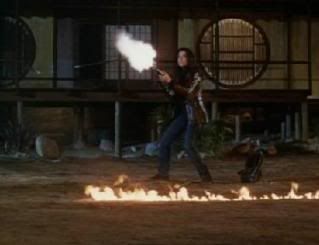
The tale then takes the traditional twists in plot one would expect from a Western, as James becomes the ninja version of the retired gunslinger slowly being drawn back in for one last showdown.
Supporting characters include Lee Van Cleef as McCairn, a rival mercenary band leader looking to help James deal with Seikura (and rid himself of a business competitor in the process), Art Hindle plays A.J, James's martial arts protege, and exotic 80's siren, Carol Bagdasarian, plays Aura, a no-nonsense female merc turned unlikely ally in James's crusade.
And to answer what you are thinking, yes. Carol is the daughter of Ross Bagdasarian, the man who once assumed the name David Seville and introduced Alvin and the Chipmunks to the world at large.

You'd have to think that the aspirations for The Octagon were pretty high since the story is pretty complex and the dialogue is rich when compared to the action movies of the time.
Sadly the film falters due to a laundry list of complications. The script plods along painfully at times and The Octagon does not follow some of the most important rules of ninja movies.
First of all, the ninjas don't really provide a tangible sense of threat. To paraphrase the immortal line from Sho Kusugi's classic, Revenge of the Ninja, the only people that are supposed to be able to kill ninja are other ninja.
Unlike the badass minions of Shiranui Shogen in Shogun's Ninja or even the Makato from The Hunted, the ninja in The Octagon are routinely outclassed and butchered by mere mortals that they should be fighting circles around. Granted that this adds some element of realism (ie. bullets > swords) but it also makes light of one of the most important parts of the plot.
If Seikura's elite shinobi are dealt with so easily, then why are mercs from around the globe flocking to his training camp in droves to learn what he has to teach?
To paraphrase Pops Racer (John Goodman) from the Warshowski's Speed Racer movie, it is a shame what passes for ninja in this production.
Secondly, The Octagon saps all of the fun out of ninja movies with an overly complicated plotline and rather silly dramatic effects. The parts of the movie that don't have to deal with Norris beating the snot out of ninja or Carol Bagdasarian walking around in really tight jeans are nigh unbearable.
Even more unbearable is the plot device where James's innermost thoughts are broadcast to the audience as audble narration....
.... but are narrated as whispers.....
We're talking "chu, chu, chu, ha, ha, ha" sounding, "Friday the 13th slasher movie"-style whispers that are almost indecipherable and are completely hilarious.
As if this wasn't bad enough, the climactic fight scene you'd expect to happen doesn't happen as James squares off against Seikura's number one ninja, Kyo (played by John Belushi's former bodyguard, Richard Norton. Norton also appears in The Octagon as Long Legs, the merc recruiter), while Seikura's fate is a disappointing dénouement that will leave you dumbfounded rather than awestruck.
The Octagon stumbles because it tries to be smarter than it should be. The 80's ninja epics of Golan-Globus and The Cannon Group worked because they took the traditional folklore and fed it steroids.
The Octagon fails because it doesn't place its tongue as firmly in its cheek as it should. While I admire The Octagon for attempting to be a different movie, I think it would have been a better film if it had stuck to the 80's ninja movie formula.
Namely: More ninja, less plot.
Sadly the film falters due to a laundry list of complications. The script plods along painfully at times and The Octagon does not follow some of the most important rules of ninja movies.
First of all, the ninjas don't really provide a tangible sense of threat. To paraphrase the immortal line from Sho Kusugi's classic, Revenge of the Ninja, the only people that are supposed to be able to kill ninja are other ninja.
Unlike the badass minions of Shiranui Shogen in Shogun's Ninja or even the Makato from The Hunted, the ninja in The Octagon are routinely outclassed and butchered by mere mortals that they should be fighting circles around. Granted that this adds some element of realism (ie. bullets > swords) but it also makes light of one of the most important parts of the plot.
If Seikura's elite shinobi are dealt with so easily, then why are mercs from around the globe flocking to his training camp in droves to learn what he has to teach?
To paraphrase Pops Racer (John Goodman) from the Warshowski's Speed Racer movie, it is a shame what passes for ninja in this production.
Secondly, The Octagon saps all of the fun out of ninja movies with an overly complicated plotline and rather silly dramatic effects. The parts of the movie that don't have to deal with Norris beating the snot out of ninja or Carol Bagdasarian walking around in really tight jeans are nigh unbearable.
Even more unbearable is the plot device where James's innermost thoughts are broadcast to the audience as audble narration....
.... but are narrated as whispers.....
We're talking "chu, chu, chu, ha, ha, ha" sounding, "Friday the 13th slasher movie"-style whispers that are almost indecipherable and are completely hilarious.
As if this wasn't bad enough, the climactic fight scene you'd expect to happen doesn't happen as James squares off against Seikura's number one ninja, Kyo (played by John Belushi's former bodyguard, Richard Norton. Norton also appears in The Octagon as Long Legs, the merc recruiter), while Seikura's fate is a disappointing dénouement that will leave you dumbfounded rather than awestruck.
The Octagon stumbles because it tries to be smarter than it should be. The 80's ninja epics of Golan-Globus and The Cannon Group worked because they took the traditional folklore and fed it steroids.
The Octagon fails because it doesn't place its tongue as firmly in its cheek as it should. While I admire The Octagon for attempting to be a different movie, I think it would have been a better film if it had stuck to the 80's ninja movie formula.
Namely: More ninja, less plot.
Wednesday, May 26, 2010
Invasion U.S.A. (1985)
(This entry is for the Chuck Norris Ate My Blog contest at the Chuck Norris Ate My Baby blog. Please visit and support the love for genre cinema.)
I'll preface this by saying that I don't think of myself as much of a Chuck Norris fan. In fact, despite seeing any number of his films in the 1980s, as an adult I tend to think of him from his execrable television series Walker: Texas Ranger along with his support of nutball Mike Huckabee for president. I have to think very hard to remember the Chuck Norris I really loved - the martial arts expert that sparred (beardless!) against Bruce Lee in Way Of The Dragon. But, despite the fact that I don't enjoy his public persona, and I even became rather weary of the internet meme that seemed omnipresent a few years back, I do have an appreciation for 80s action cinema. While necessarily conservatively bent - this was Reagan's America after all - the films had an energy and vitality (along with massive amounts of homoeroticism) that I just find missing in a lot of modern action epics. Chuck Norris became, like Mr. T, a pure symbol of unabashed manliness that seemed totally at home with the era - and seems almost quaint in the present day.
Perhaps the peak of Norris' cinematic machismo came in 1985's Invasion U.S.A. which put Norris' Matt Hunter against a hoarde of Russians - led by the vaguely Rutger Hauerish Mikhail Rostov (played with unhinged glee by Richard Lynch) - intent on spreading terror throughout the United States. Feeding off the cold war paranoia of the era, the film posits a not-too-distant-future scenario where ice-cold Russian mercenaries (with a raging hard-on of hate for American freedom) invade American shores forcing their commie values on hard working joes. But Rostov is equally interested in getting a little revenge on Hunter for spoiling his attempted attack on an American embassy years earlier, and for kicking him in the face repeatedly. Hunter is interested only in rassling alligators and zooming through the Florida swamps in an airboat, his mullet flapping fearlessly in the breeze. But it's funny how things change.
And change they do when Rostov decides to remove the thorn in his side by blowing Hunter up real good. Instead, his attack (which kills Hunter's friend John Eagle) serves only to bring the ex-secret agent out of retirement. Oops! While the terrorists had been doing a great job getting the upper hand - completely demolishing a neighbourhood with a series of bazooka blasts, and murdering fairly indescriminatly - now their attempts to blow up churches and shopping malls begin to hit a wall. A wall named Matt Hunter.
This would be a good place to mention Hunter's catchphrase, which began back at the American embassy when - with a gun barrel pressed against Rostov's head - he had told him that it was "time to die". Having obviously not followed through with that statement at the time, Hunter brings up this phrase repeatedly to taunt the Russian, even managing to get the statement broadcast on television in what must have been a particularly confusing news segment. In fact, in the last half hour it becomes less a question of if Hunter is going to kill Rostov, and more of a question of whether he's going to be able to make a callback to his catchphrase before he does so. I think you'll be pleasantly surprised.
These Russians are a particularly sneaky bunch, posing as police officers and national guardsmen, but Hunter can sniff out a red from a mile away and blows them away with his trademark twin Uzis. Eventually Hunter is arrested for various murders and destruction of property, and Rostov sees this as his final chance to kill his nemesis once and for all. Gathering all of his available men, they make an assault on the makeshift army base where he's being held but they soon discover that the whole thing was a cunning trap. The shit then convincingly hits the fan until it's "time" for Rostov to "die".
While Chuck Norris regularly played a one-man-army in his movies, perhaps no other film in his oeuvre best captures his ability to play an unstoppable bad-ass more than Invasion U.S.A. Until the film's finale (where ol' Hunter suffers a boo-boo over his eye), he is literally untouchable in this film - easily getting the upper hand on terrorists, the police, and nosy reporters who hide their lust for him under low-key hostility. Norris isn't asked to do much more than fire guns, kick bad guys in the face and occasionally throw in a witty (or, close enough) remark ("If you come back in here, i'm going to hit you with so many rights you're going to beg for a left."), but does all three quite convincingly. As an action hero, Norris never takes much joy in crushing his enemies and hearing the lamentations of their women, but his stone-face seems to be part of his appeal. Saving the U.S.A. is simply part of his job description.
Thankfully, what Chuck is missing in personality is made up for by Richard Lynch's venomous portayal of the psychotic Rostov. In a recent interview with Shock Cinema Lynch comes off as an intelligent and good-natured man, but he's supremely good at playing steely lunatics and he's in rare form here. In one memorable scene (also featuring genre favorite Billy Drago in a brief role), Rostov feigns a drug deal before killing some bodyguards, blowing Drago's nuts off and tossing a crack-whore through a window. While perhaps a bit deranged to be a believable mastermind, in a nice touch Rostov is kept in check by Nikko - his second in command. It's only after Nikko's death (at the hands of Hunter, natch) that Rostov sends all of his men into a rather obvious trap. Lynch obviously takes a lot of joy in being evil, and his eventual comeuppance feels well earned.
Director Joseph Zito cut his teeth on horror films like The Prowler and Friday The 13th: The Final Chapter (a.k.a. the one with Crispin Glover), and it's rather amusing how he treats his baddies - Rostov in particular - like slasher villains. The terrorists stalk around in the dark silently - even killing two unlucky promiscuous teenagers on the beach. Zito obviously takes relish in the larger budget, and decides to immolate every building, vehicle and (occasional) terrorist that might make for an interesting visual. The action choreography isn't particularly interesting, but the sheer scale - particularly the total warfare in the streets at the end - are of a scope that is still impressive to witness.
Invasion U.S.A. goes against a lot of what I enjoy in both my action and exploitation films. It's mindless - except for some general cold war paranoia and xenophobia - and exists solely for the joy of watching Chuck Norris mow down bad-guys in increasingly violent (and unlikely) ways. But it's the capable direction of Zito, along with a great villainous performance from Richard Lynch, that keeps things moving swiftly and I couldn't help but feel a tinge of nostalgia for Norris' final victory. Even better, the film recognizes that - at that point - there's nothing more that needs to be said and simply ends. I think i'll do the same.
Saturday, May 22, 2010
Capsule Review: Good Bye Lenin! (2003)
Set in 1989, and detailing the changes in Germany immediately following the fall of the Berlin wall, Good Bye Lenin! focuses on the young Alex Kerner (Daniel Brühl from Inglourious Basterds) and his attempts to hide the shocking changes from his mother after she awakes from a heart-attack induced coma. As Alex goes to ridiculous lengths to hide the truth from his frail parent, he finds his own life filled with a sense of nostalgia for the East Germany of his past, while resisting the massive amount of changes pouring in from the west. A sly comic commentary, the film has moments of genuine drama and a collection of winning performances. Pairs nicely with The Lives of Others (2006).
Capsule Review: Apocalypto (2006)
After The Passion of the Christ (and re-watching Braveheart) I was just about done with Mel Gibson as a filmmaker. While obviously visually gifted, his films simply seemed designed for audiences with cinematic needs different than my own. It was this cynicism that brought me to Apocalypto, Gibson's film of a young Mayan attempting to escape human sacrifice to get back to his wife and child. Filmed entirely in the Yucatec Maya language (with subtitles), the entire concept seemed a little too gimmicky, and the subject matter held little appeal, so I was particularly surprised to be enraptured and fascinated by what amounts to a particular unique chase film. Think The Warriors, only set in the 16th century. While slow to start, the film picks up speed before reaching a breathtaking pace as Jaguar Paw (Rudy Youngblood) must escape from the hordes in pursuit of him and return to his wife before her hiding spot fills with water. A very pleasant surprise.
Capsule Review: Oldboy (2003)
South Korean cinema is currently some of the most original and exciting in the world, with filmmakers like Kim Jee-woon, Bong Joon-ho and Kim Ki-Duk leading a charge of genre-influenced cinema which has still struck a chord with the general public. However, my own awakening came with my first viewing of Chan-Wook Park's incredible Oldboy. The second part of Park's "vengeance trilogy" (bookended by Sympathy for Mr. Vengeance and Lady Vengeance), Oldboy details the seemingly random 15 year imprisonment of Oh Dae-Su (Choi Min-sik), followed by his efforts to discover who confined him and why. Filled with memorable and violent imagery - most notably an endless fight (shot in one take) involving Oh Dae-Su defending himself armed only with a hammer - Oldboy may be a bit too extreme for some audiences, but for those who appreciate a bloody (and perverse) story of revenge it remains absolutely illuminating. One of the best films of the decade.
Friday, May 21, 2010
The Baader Meinhof Complex (2008)
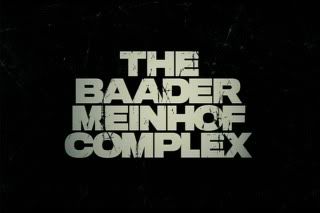
I’m continually reminded that the 60s were the 60s all over. They were a time of revolt and revolution in all countries, not just the US--in fact, while the US is the country many of us think of when the 60s are mentioned, it’s quite possible that their culture revolution was the least important of all. But hey, what do I know, I’m just reviewing a movie.
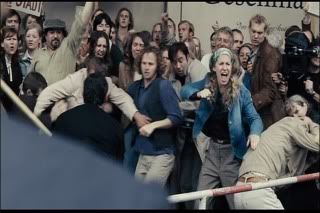
While Germany in the 60s had its fair share of free love hippies, THE BAADER MEINHOF COMPLEX follows the lives of the violent, ugly cousins of the hippies: the Marxist revolutionaries. These particular revolutionaries were known as the Baader-Meinhof Gang, when they were thought of as more of a criminal organization, and later as the Red Army Faction (or RAF), a communist “urban guerrilla” group. The film shows how the group forms out of the meeting of young idealists--notably, Andreas Baader (Moritz Bleibtreu of RUN LOLA RUN)--and the Leftist journalist Ulrike Meinhof (Martina Gedeck). As it was with the youth movements found elsewhere on the planet, the young people of Germany were rebelling against the old, corrupt culture of their parents. Unlike the youth of the rest of the world, their parents were Nazis.
One can sympathize with their need to lash out, to take an active role in countering what they saw as the “bad old ways”; police brutality and American imperialism seemed to them just another instance of the evils that the older generation had committed. The problem, of course, was method. How, you might ask, do you lash out at a system, since a system is, necessarily, not a material object or person? The answer is to engage in what some call “urban guerrilla warfare” and what others would call “terrorism.”
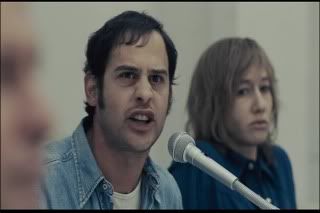
And so the film follows the Baader Meinhof gang as they wage their urban warfare, and one by one are arrested by the police and put on trial. The first part of the film shows us their formation and their “terrorist” acts; this section of the film is fast-moving and action-packed, with robberies and gunfights and nudity and fucking and the like. The second half of the film details the capture of the main members of the game and their long imprisonment, accompanied by a good deal of inter-personal conflict among the members. This part is (necessarily) much slower.
Personally, I feel the film’s chief strength (aside from illuminating a piece of important German--and world wide--cultural history I knew very little about) was director Uli Edel’s handling of the action scenes. A key example of this is one of the film’s early scenes, which involves a riot incited by the visit to Berlin by the Shah of Iran. Dozens of actors--student protesters, members of the shah’s security detail, police officers, and innocent bystanders--are included in the scene, and various (important) events are edited together. A lesser director would end up presenting the audience with a bit of a mess, or necessarily foreground the actions of a select few while using the rest of the extras to fill space. Edel, on the other hand, is able to present the audience with a scene that is easy to follow, and which gives you a good idea of the riot as a whole, not just as a composite made up of different parts. And he does it all without utilizing that annoying shakey-cam, fast-editing effect that so many directors and editors seem to use to create the feeling of frenetic energy. Some American action directs would be well served to check it out.
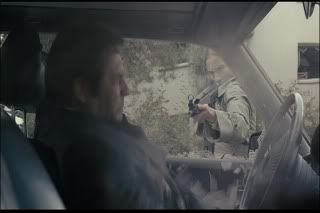
Perhaps the decision made by the filmmakers, to present a fairly historically-accurate portrayal of events, may make the film less accessible. It’s not only that the majority of its non-German audience will be unfamiliar with the events that inspired the film, but that, in keeping with the true story of how events unfolded, the film necessarily introduces new characters late in the film, while including various characters throughout who can only be briefly introduced before exiting the film (for various reasons). A typical dramatization of events would involve creating composite characters, who can stand in for two or more figures, and so giving the audience fewer names and faces to know and remember. And so, dramatic effect may, in some ways, be sacrificed for realism.
THE BAADER MEINHOF complex is a fascinating film, and while I wouldn’t recommend it to anyone who isn’t interested in the subject matter, I’d wholeheartedly endorse it to anyone keen on Leftist movements, the 60s, urban warfare, etc., etc.
Thursday, May 20, 2010
Bloody Nightmares #22: Burning Dead (2004)
Sick of zombies yet? It wasn't that long ago that genre fans were clamoring for films featuring the walking dead; when the idea of another George Romero zombie film seemed like some sort of beautiful dream. Flash ahead a decade and - after 28 Days Later, the Dawn of the Dead remake, Shaun of the Dead, Land of the Dead, Zombieland and the literally hundreds of tributes, sequels, remakes, and reimaginings - you would be excused for perhaps being a little burnt (ha!) out on the genre.Well, thankfully while Burning Dead certainly features zombies - and plenty of them - the film stays far enough away from traditional z-word material that it's able to tell a story that is (wait for it) fairly original. Combine this with some committed performances and an ability to work inside its limitations, and you have an effort that manages to rise above other no-budget living dead efforts.
Returning to his home town after a decade away, a guilt-ridden Jim Reed (D. Vincent Ashby) finds himself suffering from nightmares prominently featuring zombies blaming him for starting the fire that devastated the town (and killed his parents) when he was a teenager. Even worse, Jim has started to see these visions while awake and worries that he's starting to lose control - a theory supported by him wandering into his nephew's bedroom and trying to kill the kid with a hammer. When Shelly, an old flame (ha!), shows up Jim begins to wonder if his dreams might really represent some deeply hidden memories of the fire. His search for the truth leads to some uncomfortable, and supernatural, secrets being revealed.
Much credit for the minor success of Burning Dead must be given to D. Vincent Ashby who, despite some shaky moments, is obviously giving everything he has to make this role work. His Jim is a tormented soul, who has a habit of losing himself in flashbacks and is almost comically solemn when speaking about nightmares or his own disturbed memories. Ashby is asked to perform a lot of dialog - and even occasionally emote - and does so surprisingly professionally with the proper amount of brooding to give the often silly material the proper weight. The supporting cast are also a step above most other shot-on-video efforts, with Jon Russell as Jim's childhood friend Bill Nash doing a fine job on comic relief.
Unfortunately director George Demick doesn't give Ashby or the rest of the cast as much support as they deserve. While Demick wisely stays away from many visual tricks, his camera work tends to be rather stationary which makes some of the longer dialog scenes interminable. Image quality varies significantly, with daytime shots looking clear and underlit night shots forcing me to squint to make out any details. There's plenty of digital artifacting as well, but that could be the result of the mastering of the disc, so I won't blame Demick (or Director of Photography Tracy C). I will blame him for some bizarre sound issues that pop up throughout where all dialog comes from one audio channel, with background music coming from the other. It's needlessly distracting, and draws a lot of attention to edits - which are sometimes accompanied with a sudden switch to the sound coming out of both channels. Pretty inexcusable.
Still, Demick deserves credit for an often intriguing script which takes a few surprising twists near the end. Much of the first twenty minutes deals with whether Jim's hallucinations are actually occurring, but the film doesn't dwell on the suspicions of the people around him, instead focusing on the mystery of how the fire occurred and why Jim is being held responsible. While the actual content isn't always perfect - Bill's explanation of his wife's death is certainly rather odd - it all does add up to a rather neat climax and the film doesn't waste time getting to the end once things start to speed up.
Much credit for the minor success of Burning Dead must be given to D. Vincent Ashby who, despite some shaky moments, is obviously giving everything he has to make this role work. His Jim is a tormented soul, who has a habit of losing himself in flashbacks and is almost comically solemn when speaking about nightmares or his own disturbed memories. Ashby is asked to perform a lot of dialog - and even occasionally emote - and does so surprisingly professionally with the proper amount of brooding to give the often silly material the proper weight. The supporting cast are also a step above most other shot-on-video efforts, with Jon Russell as Jim's childhood friend Bill Nash doing a fine job on comic relief.
Unfortunately director George Demick doesn't give Ashby or the rest of the cast as much support as they deserve. While Demick wisely stays away from many visual tricks, his camera work tends to be rather stationary which makes some of the longer dialog scenes interminable. Image quality varies significantly, with daytime shots looking clear and underlit night shots forcing me to squint to make out any details. There's plenty of digital artifacting as well, but that could be the result of the mastering of the disc, so I won't blame Demick (or Director of Photography Tracy C). I will blame him for some bizarre sound issues that pop up throughout where all dialog comes from one audio channel, with background music coming from the other. It's needlessly distracting, and draws a lot of attention to edits - which are sometimes accompanied with a sudden switch to the sound coming out of both channels. Pretty inexcusable.
Still, Demick deserves credit for an often intriguing script which takes a few surprising twists near the end. Much of the first twenty minutes deals with whether Jim's hallucinations are actually occurring, but the film doesn't dwell on the suspicions of the people around him, instead focusing on the mystery of how the fire occurred and why Jim is being held responsible. While the actual content isn't always perfect - Bill's explanation of his wife's death is certainly rather odd - it all does add up to a rather neat climax and the film doesn't waste time getting to the end once things start to speed up.
Remember what I said about working within its limitations? Well, that goes for make-up and special effects as well as Demick trades in gore for some decent (and plentiful) zombie make-up and LOTS of fog. The burnt flesh on the zombies actually looks quite good, and while there isn't much blood to be found, these really are not the gut-munching sort of zombie. There's only one scene featuring nudity, but it's actually rather effective - intentionally bringing to mind a rather famous scene from The Shining - and it's a slightly more mature woman as well which is definitely a rarity in this collection.
Burning Dead is presented in a full-frame presentation, and is obviously shot on digital video. As mentioned, the digital artifacting is atrocious during the night scenes, but it's generally very watchable. There are a few random digital glitches, but those are par for the course at this point.
This is part of the Bloody Nightmares collection, and therefore has absolutely no extras. Not even chapter stops. I can't imagine why that is.
An enjoyable no-budget sorta-zombie film that manages no to tread the same old ground, Burning Dead takes an original concept and some willing participants and manages to create a perfectly decent 90 minute horror film. It's not very scary, and the technical problems would likely scare away those used to bigger budgets, but there's plenty to appreciate here and it's a shame that it seems to be nearly completely unknown - it doesn't even have an IMDB page! You could definitely do a lot worse.
Wednesday, May 19, 2010
Capsule Review: Collateral (2004)
Even devoted Michael Mann devotees might have been somewhat suspicious of a film starring Tom Cruise as a ruthless hired killer tormenting a cab driver (played by Jamie Foxx) as he takes out a list of men marked for execution, but Mann does his usual excellent job bringing the city of Los Angeles to life and wrings some surprising performances from his actors. Cruise is fine as the murderous Vincent, but it's Jamie Foxx who really impresses with a nervy, detailed performance that won him plenty of acclaim (and an Oscar nomination). What could have been a predictable, lazy thriller is helped immensely by Mann's assured direction and use of digital cameras to achieve a unique look. The ending is flawed, and there are some dull bits, but Collateral is simply more entertaining than it has any right to be.
Monday, May 17, 2010
The Human Centipede (2010)
Audience members and critics alike bemoan the lack of originality in popular entertainment these days. Sequels, remakes, prequels and re-imaginings have taken over the box office, so when something truly original comes along it tends to make people sit up and take notice. And sit up they did when word started spreading about a low-budget genre film that went into some strange new areas of exploitation. The Human Centipede likely could never live up to that advance word, so the real question becomes whether the central concept is enough to carry a 90 minute horror film. The answer, however, is a little more complicated than yes or no.
First, let's take a look at the rather basic and oddly familiar plot of the film. Dr. Heiter (a scene gnawing Dieter Laser) is a famous German surgeon, now retired, who specialized in the separation of Siamese twins. After two rather vapid vacationing American girls show up at his door looking for help after getting lost, Heiter is glad to include them in his latest experiment. After drugging them and restraining them in his lab, along with a Japanese man he picks up to complete the project, he surgically sews the three together anus to mouth to create a single digestive system, eventually hoping to train this "human centipede" to be his plaything. However, his project might be in jeopardy when some police officers start investigating the recent disappearances in the area.
The first thing to get out of the way is that The Human Centipede isn't nearly as revolting as you might think. Certainly the core idea is hideous, and psychologically it's a mind-bender, but director Tom Six is almost restrained in his presentation of physical horror. There's some brief messy surgery footage, and the climax gets plenty bloody, but if you're expecting a cavalcade of gore you're likely to be surprised. That said, most people won't be able to get over the centipede concept, and for good reason. Six puts our three antagonists through absolute agony, showing them little sympathy as they scream (or, at least attempt to scream) about their bizarre fate, and once the deed is done they are still put through their paces (Heiter memorably attempts to train them to bring him a newspaper). Six's camera never stops moving, dollying slowly to show off Heiter's dapper surroundings and creeping through the hallways and inside the underground lab.
But this is Dieter Laser's show, and the actor obviously takes great pleasure in tearing into the material - both literally and figuratively. Six makes great use of Laser's snake-like features, his face frozen in a perpetual grimace aside from the moments when he explodes in anger. Rejecting the modern horror convention of giving villains sympathy by digging into their background, we get no idea why Heiter does what he does - aside from that he simply enjoys it. There are hints of the surgeon's wish to play God, and Heiter's jackboots and riding crop are obvious Nazi imagery, but only add a layer of kink to a film that rejects subtext in favor of cheap thrills.
What the film gains in Cronenbergian body horror, it loses in suspense. While there's a certain fascination in the film's first hour of how exactly Heiter is going to collect the subjects he needs for the titular operation, Six unceremoniously dismisses his female leads who decide to make a series of awful decisions right from the beginning. In fact, even when the operation is complete it's the Japanese Katsuro who shows the most initiative in trying to escape, while the females are shown to be ineffective at every turn. This streak of misogyny runs right up to the end, where an odd (and rather ridiculous) decision by a character leads things to peter out prematurely.
Which is a shame as there is some wicked black humor - such as when Dr. Heiter first explains the concept of his surgery to his horrified captives - but the film's tagline ("100% Medically Accurate") implies an attention to detail that just doesn't exist. I was left with dozens of questions about how the mechanics of the operation and the aftermath would work, but once the first bowel movement occurs, the film decides to abandon any sense of morbid curiosity for a generic "suspicious police" plot device.
Certainly not a complete waste of time, The Human Centipede is neither shocking enough to make a lasting impression, nor unique enough to make it worth contemplating at length, though there are a few rewarding gross-out moments and a truly amazing central performance. Despite an obvious low budget, the film is actually rather slick and I can't help but applaud the attempt to do something original, even if it doesn't quite succeed. Six has promised a sequel in the near future, and perhaps the international attention given to this film will propel him to live up to this film's promise.
Sunday, May 16, 2010
Capsule Review: Downfall (2004)
Perhaps as famous for a (purposely) overdone Internet meme as for its actual content, Downfall is a painfully detailed chronicling of the final days of Adolf Hitler and his bunker compatriots . Eschewing visual tricks or flashy editing, the film relies almost entirely on the strength of its performances, particularly the monumental central performance by Bruno Ganz as Hitler. But the supporting performances, particularly Alexandra Maria Lara as secretary Traudl Junge and the memorably pock-marked Ulrich Matthes as Joseph Goebbels - whose final moments with his family are chilling - prove to be equally memorable in their own way. Director Oliver Hirschbiegel resists the urge to demonize the men and women who populate the bunker, some of whom celebrate obliviously as the world around them crumbles, but the various delusions of grandeur and invincibility show just how removed from reality many of them had become.
Capsule Review: Les Vampires (1915)
Running 440 minutes and split into ten unequal sections, Les Vampires is not quite a serial (it's missing the cliffhangers we associate with that genre), and also not quite a series of films. However, it's a wildly entertaining thriller which is as ambitious in its own way as D.W. Griffith's films of the era - featuring elements that would crop up in films for decades to come. The lengthy tale follows reporter Phillipe Guerande (Edouard Mathe), who is one the trail of the criminal gang The Vampires, who are terrorizing the upper class with a string of robberies and murders. Along with the faithful (and oddly competent) comic relief Mazamette, Phillipe captures the various Grand Vampires who run the gang, as well as the unforgettable Irma Vep (Musidora), who remains the series' most enduring character. In fact, the villains are so appealing that they make the rather bland and ineffective Phillipe (who manages to get himself captures multiple times) seem rather boring. While slow at spots, things come to a rousing climax. A remake of Les Vampires ended up being the subject of the 1996 film Irma Vep starring Maggie Cheung.
Tuesday, May 11, 2010
Capsule Review: Tsotsi (2005)

A deeply emotional and assured film, Tsotsi (meaning thug, as well as being the main characters name) explores the lives of petty criminals in Soweto, the township outside Johannesburg. Tsotsi (Presley Chweneyagae) is their leader, an emotionless killer who seems to have few redeeming qualities until he finds himself accidentally in possession of an infant. What follows isn't a tale of redemption, but an examination of how a series of events can forever change a person. Tsotsi forces a young mother (Terry Pheto) to breast-feed the child, but they eventually develop a sense of mutual respect which forces Tsotsi to rethink some of his life's choices. Surprisingly hopeful, South African director Gavin Hood (later to helm X-Men Origins: Wolverine) avoids the flash of films like City of God while refusing to make judgments on his characters. Winner of the 2006 Best Foreign Language film Oscar.
Capsule Review: The Lives Of Others (2006)
Captain Gerd Wiesler (Ulrich Muehe) works for the "stasi", the state police who record and observe those thought to undermine the government in 1980s East Germany. However, Wiesler becomes fascinated with the lives of playwright Georg Dreyman (Sebastian Koch) and actress Christa-Maria Sieland (Martina Gedeck), whom he begins to protect when they begin to incriminate themselves. A fascinating accompaniment to the content in Good Bye Lenin!, the film features a rather incredible lead performance from Muehe who manages to bring humanity and humor to what could have been a very unsympathetic role. Director Florian Henckel von Donnersmarck brings the cold efficiency of the era to life in this Best Foreign Language Oscar winner.
Capsule Review: The Host (Gwoemul) (2006)
After a lab assistant dumps toxic chemicals into South Korea's Han River (up to this point based on a true incident), a giant squid monster starts terrorizing the riverside. That would be enough for most monster movies, but despite the terrific looking monster (utilizing some great CGI effects) this is really a story about the Park family, particularly the slovenly Park Gang-du (Kang-ho Song) whose daughter is kidnapped by the monster and brought to its rather disgusting lair. The quirky family relationship provides plenty of humor, but there's also a surprising amount of drama to be rung from their frantic search, as they find themselves blocked in their quest by government officials. Director Joon-ho Bong is uniquely talented in bringing this oddly balanced, but constantly rewarding monster movie to the screen.
Monday, May 10, 2010
Capsule Review: Raiders of the Lost Ark (1981)
Already having created an iconic character in Han Solo, Harrison Ford was launched into superstar status with his role as the adventuring, whip-cracking archeologist explorer Indiana Jones in George Lucas' and Steven Spielberg's tribute to the Saturday morning serials of their childhood. Filled with old fashioned adventure, combined with unique international locales and a hero with charisma to spare, the film has been countlessly imitated but never improved upon. The finale, where the mythical Ark of the Covenant (which is meant to house the ten commandments) is opened, leading to the melting of anyone who looks into the light, is memorably gruesome. Followed by three sequels of varying quality.
Capsule Review: Close Encounters of the Third Kind (1977)
While Star Wars ushered in the summer special effects blockbuster, it was soon followed by a much more down to earth science fiction tale. Steven Spielberg's Close Encounters of the Third Kind may be less cosmic, but in its own way it's an equally epic tale of ordinary people trying to come to grips with unexplained phenomena. Though spattered with scary moments, the aliens here are much more likely to fill the audience with awe, and the cast – particularly Richard Dreyfuss – certainly get their obsessions across. Wonderful special effects which hold up surprisingly well.
Who Framed Roger Rabbit (1988)
Sure, the special effects in Avatar were astounding, mixing live action and computer animated footage in an organic and fluid way that I can only imagine made George Lucas wet his pants. But even with all of that sound and fury (and Academy Awards), it doesn't touch my favorite mix of film and animation. That would be Robert Zemeckis' somewhat unlikely pairing of cartoon zaniness and film noir in Who Framed Roger Rabbit, which holds up surprisingly well for a film released in 1988 (and without the luxury of computer assistance). In many ways the final word on traditional hand-drawn animation, the film proved to be an instant smash for both children and adults.
Eddie Valiant (Bob Hoskins) is a private investigator in 1940s Los Angeles who specialized in Toontown, the section of L.A. which houses the characters that populate the cartoons of Disney, Warner Brothers, Tex Avery and Maroon Cartoons. Unfortunately, after a Toon kills his brother, he abandons working for cartoons totally, scraping a living together between bottles of booze. That is, until he's paid to take some photos of the wife of Maroon Cartoon star Roger Rabbit playing patty cake with novelty impresario Marvin Acme (Stubby Kaye). After Acme is bumped off, Roger is the number one suspect and comes to Valiant for help. What follows is a tale of sex, lies and toons as Valiant goes up against the the wicked Judge Doom (Christopher Lloyd), who has his own ideas about the future of Toontown.
Surprisingly adult in both tone and content, Who Framed Roger Rabbit could have easily become a rapidly dated technical exercise (like so many mid-90s CGI-laden films), but instead finds a near perfect balance between zany, cartoon assisted sight gags and shadowy, Chinatown-like noir. In fact, Chinatown is a good reference point as the central conspiracy of removing Toontown to build a freeway has echoes in Chinatown's irrigation plot. While still accessible to children, I'll admit that the seven year old version of me didn't understand all of the intricacies of the script, which made revisiting it quite a treat.
Much of the credit of the film's success has to be given to animation director Richard Williams who was able to present all of the famous characters at their very best (producer Steven Spielberg worked out the deals with the various character owners, which is quite a feat in itself), while also creating new characters that could successfully stand along side them. Roger combines the look of several characters along with the exaggerated spit-takes of Tex Avery cartoons, into an appealingly silly everyman character, while Charles Fleischer does a great job bringing him to life with his trademark speech impediment. The sheer never of effects involved, and the amount of detail (including shadows) to allow for the moving camera - necessary to keep things cinematic - are staggering.
The acting is solid across the board. Bob Hoskins has the herculean task of acting (and physically interacting) with nothing, while still adequately hiding his prominent Cockney accent and slipping into the character of the classic Sam Spade gumshoe. While his accent occasionally slips, he makes for a terrifically ornery detective. The villainous Judge Doom is brought to life with creepy eccentricity by Christopher Lloyd, channeling his Buckaroo Banzai role as he dispatches toons with cold efficiency. Supporting performances are great, with the cartoon voice work (featuring veterans like Mel Blanc, and original voice for Betty Boop Mae Questel) mixing well with the grizzled live actors.
But in the end it's the cinematic originality of director Robert Zemeckis<, along with writers Jeffrey Price and Peter S. Seaman (adapting from a book by Gary K. Wolf), who manage to make this film work. As stated in the special features, this was really three films in one: a noir detective story, a feature length cartoon, and a special effects comedy - and it's a testament to Zemeckis' post-Back To The Future confidence that all three come off so well. The sheer amount of planning (represented by hundreds of concept drawings available on the DVD) that went into the film is boggling.
Previously released on DVD in a bare bones edition, the Vista Special edition is a marked improvement and goes all out with special features, despite some confusing choices. The oddest decision was to make this a two disc edition with a "family friendly" fullscreen version on the first disc (along with a slew of kid-friendly special features), while the Widescreen 1.85:1 "Enthusiast" edition is on the second. While I like the idea of the special features, I'm fairly certain that even young children are used to widescreen images at this point.
The first disc includes the three Roger Rabbit short films originally created to go before other Disney (and Touchstone Pictures) features. Tummy Trouble, Rollercoaster Rabbit and Trail Mix-Up are all fine tributes to traditional cartoon violence and feature some really high quality animation - particularly Rollercoaster Rabbit (directed by The Lion King's Rob Minkoff), which might be the best of the bunch. There's also a 10 minute long behind-the-scenes look at the creation of the film hosted by Charles Fleischer called Who Made Roger Rabbit. It's fluff, but for youngsters wanting to get a basic idea of how the film was made it's a breezy watch. Also included is a DVD game included called Trouble In Toontown. These are never any good, but it's an ok diversion and includes more voice work from Fleischer. Trailers for Schoolhouse Rock and Ultimate X (an X-Games documentary) round off the first disc.
The meat of the special features is on Disc 2, and obvious care has gone into covering almost any topic a Roger Rabbit enthusiast might be interested in. Some mention should be made of the DVD menus which feature new footage of the Benny The Cab character traveling around Maroon Studios. First off is a newly recorded full length audio commentary featuring Robert Zemeckis, Frank Marshall, Jeffrey Price, Peter Seaman, Steve Starkey and Ken Ralston. Despite the large number of participants, the tone is relaxed and there's a great balance between technical information and fun anecdotes and in-jokes. Thanks to those taking part continually re-introducing themselves, it also manages to avoid being confusing.
The Valiant Files is an extensive collection of concept drawings, behind-the-scenes photos and other supplementary material for the film. A famous deleted scene - where Eddie has a cartoon pig's head grafted to his own - is explored in detail. Before and after shows Bob Hoskins performing some of the most memorable Toontown scenes against bluescreen. While Toon Stand-ins shows rehearsal footage of lifesize rubber models used to give animators a sense of scope and shadow. On Set! is a brief look at a scene where Bob Hoskins is travelling inside of Benny The Cab, and some of the difficulties involved with filming without having the luxury of physical characters.
Finally, we have the 35 minute long documentary Behind The Ears, which is a fascinating look at the making of the film including new interviews with almost all of the major players, as well as lots of behind-the-scenes footage. Most interesting is clips from the original test film which convinced executives to greenlight the film. And then there's Toontown Confidential, a trivia subtitle track that gives a constant stream of interesting facts and information. These two features (combined with the commentary) feature a lot of repeated information and stories, but all are worthwhile and filled with interesting information.
Finally, we have the 35 minute long documentary Behind The Ears, which is a fascinating look at the making of the film including new interviews with almost all of the major players, as well as lots of behind-the-scenes footage. Most interesting is clips from the original test film which convinced executives to greenlight the film. And then there's Toontown Confidential, a trivia subtitle track that gives a constant stream of interesting facts and information. These two features (combined with the commentary) feature a lot of repeated information and stories, but all are worthwhile and filled with interesting information.

Who Framed Roger Rabbit exists in that sweet spot between children's film and adult entertainment that seems to be the most difficult target for films to hit - and can be seen as the precursor to the similarly toned Pixar films. To really appreciate the difficulty of what was pulled off here, just watch just about anything done with the core Disney or Loony Toons characters since this which never come close to reaching this level of unrestrained whimsy. A success on a number of levels, one can only wish that more children's entertainment treated its audience with such respect.
Saturday, May 1, 2010
Capsule Review: O Brother, Where Art Thou? (2000)
While lauded more for its Americana soundtrack than for the film that surrounds it upon its release, the Coen brothers' loose adaptation of Homer's Odyssey is a winner, with the tale of three escaped convicts - Everett (George Clooney), Pete (Coen regular John Turturro) and Delmar (Tim Blake Nelson) - making their way across 1930s Mississippi in search of some supposed treasure. Groundbreaking cinematography from Roger Deakins turned green fields and blue skies into a sun-bleached mix of brown and yellow, while the Coen's ear for dialogue is on full display. Packed with amazing music compiled by T-Bone Burnett, this film is a treat for the eyes and ears.
Capsule Review: Crouching Tiger, Hidden Dragon (2000)
A sensation upon release, Crouching Tiger, Hidden Dragon combined the fluid, gravity defying action of Chinese Wuxia films with the drama specialized in by director Ang Lee. This hybrid led to a series of worthwhile Martial Arts epics (Hero, House of Flying Daggers) getting respectable releases in North America. Helped immeasurably by the high flying action choreography of Yuen Woo-Ping, Lee brought together several generations of notable Chinese actors to bring his story - about the search for an ancient sword and the attempted corruption of a young girl - to life. Terrific performances from the leads, including Chow Yun-Fat, Michelle Yeoh, Ziyi Zhang and Pei-pei Cheng (Come Drink With Me).
Capsule Review: Groundhog Day (1993)
A high concept comedy - in this case concerning a weatherman trapped in a time loop forcing him to relive a day endlessly - can often collapse under the weight of its plot requirements. This could have particularly been the case here, which wedded a science fiction premise with the loose, improvisational nature of Bill Murray's screen persona. However, director Harold Ramis finds the perfect blend of humor and (surprising) pathos as Murray's Phil Connors goes through stages of excitement, depressing and eventual redemption. It's weighty stuff - particularly in a montage of Phil's attempted suicides - but works beyond all expectations thanks to a terrific cast and a smart script which commits to the concept totally.
But that's one terrible poster.
But that's one terrible poster.
Subscribe to:
Posts (Atom)









